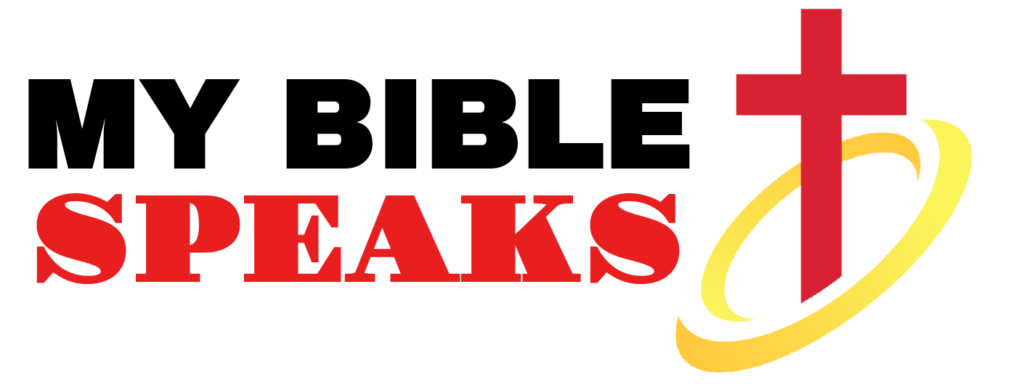The doctrine of the Christian theology is fundamental to the faith, crucial for understanding the nature of the Triune God – the Father, Son, and Holy Spirit – and how believers should relate to this divine divine nature. While the theological doctrine of the Trinity may raise complex questions, it is possible to gain a solid grasp of its significance and meaning for the Christian worldview.
Key Takeaways
- The Trinity is a core belief in Christianity, defining God as one in essence but three distinct persons.
- Understanding the Trinity is crucial for comprehending the Christian conception of the divine nature and the relationship between the Father, Son, and Holy Spirit.
- While the Trinity may seem paradoxical, it is not a contradiction and can be reconciled through careful theological examination.
- The Trinity has a strong biblical foundation, with both Old and New Testament references providing the groundwork for this profound theological doctrine.
- The Trinity shapes the Christian understanding of God, highlighting His unity, diversity, and the unique roles of each person within the Godhead.
What is the Doctrine of the Trinity?
The Christian doctrine of the Trinity is a fundamental belief that profoundly shapes the understanding of the Triune God. It expresses the essential truth that there is one God who eternally exists as three distinct Persons: the Father, the Son (Jesus Christ), and the Holy Spirit. This doctrine is central to the Christian faith, as it defines the divine essence and personhood of the Trinity.
The Father, Son, and Holy Spirit are Distinct Persons
The doctrine of the Trinity affirms that the Father, Son, and Holy Spirit are distinct Persons, each with their own unique centers of consciousness and will. They are not merely different modes or manifestations of the same divine being, but three co-equal and co-eternal Persons within the one Godhead.
Each Person is Fully God
Each Person of the Trinity is fully God, possessing the same divine attributes and essence. The Father is God, the Son is God, and the Holy Spirit is God. Yet, they are not three gods, but one God in three Persons. This affirms the personhood of the Trinity and their shared divine essence.
There is Only One God
Despite the distinct Personhood of the Father, Son, and Holy Spirit, Christian monotheism holds that there is only one true and living God. The Triune God is not three gods, but one God who exists in three Persons. This three in one understanding of the divine nature is a central tenet of the Christian faith.
“The Father is God, the Son is God, and the Holy Spirit is God; and yet there are not three Gods but one God.” – Athanasius
Is the Trinity a Contradiction?
The Trinity doctrine, which states that God is one in essence but three in person, is often perceived as a contradiction. However, this is a common misconception. The law of non-contradiction, which states that a thing cannot both be and not be in the same way and at the same time, does not actually apply to the Trinity.
The key to understanding the Trinity is recognizing the distinction between essence and person. God is one in essence, meaning He shares a single, undivided divine nature. Yet, He is three distinct persons – the Father, the Son, and the Holy Spirit. These three persons are not three gods, but rather three distinct expressions of the one true God.
As C.S. Lewis eloquently stated, “The penetrating light, the blazing fire, and the gentle wind are not three gods, but three persons of the single God.” Just as a human being can be a father, a son, and a husband without being three distinct people, so too can the one God exist as three distinct persons while remaining a single divine essence.
“The penetrating light, the blazing fire, and the gentle wind are not three gods, but three persons of the single God.”
Therefore, the Trinity doctrine does not violate the law of non-contradiction. God is one in a certain way (essence) and three in a different way (person). This distinction allows the Trinity to be a profound and coherent expression of the Christian understanding of the divine nature.
The Biblical Foundation for the Trinity
While the term “Trinity” is not explicitly mentioned in the Bible, the foundations for this fundamental Christian doctrine are firmly rooted in the Scriptures. Both the Old Testament and the New Testament provide insights into the tri-personal nature of the one true God, laying the groundwork for the Church’s understanding of the Father, the Son, and the Holy Spirit.
Old Testament Hints
The concept of monotheism, the belief in one God, is clearly established in the Old Testament. However, within this singular Deity, there are hints and glimpses of a tri-personal nature. For instance, the Hebrew word for “God,” Elohim, is a plural noun, suggesting a plurality within the Godhead. Additionally, passages like Genesis 1:26, where God says, “Let us make man in our image,” point to a divine council or community within the one true God.
Furthermore, the Old Testament frequently refers to the “Angel of the Lord,” who is distinct from yet closely identified with God Himself. Appearances of this “Angel” in the Old Testament, such as in the book of Judges, indicate a pre-incarnate manifestation of the Son, the second person of the Trinity.
New Testament Teachings
The New Testament makes the Trinitarian nature of God explicit, with clear references to the Father, the Son, and the Holy Spirit. In the Great Commission, Jesus commands his disciples to “baptize in the name of the Father and of the Son and of the Holy Spirit” (Matthew 28:19), underscoring the distinct personhoods of the three divine Persons. The apostolic benediction in 2 Corinthians 13:13 also highlights the Trinitarian structure of Christian faith: “The grace of the Lord Jesus Christ and the love of God and the fellowship of the Holy Spirit be with you all.
Additionally, numerous New Testament passages, such as the baptism of Jesus (Matthew 3:16-17) and the transfiguration (Matthew 17:1-8), depict the three Persons of the Trinity in clear and distinct ways, further solidifying the biblical basis for this foundational Christian doctrine.
“Go therefore and make disciples of all nations, baptizing them in the name of the Father and of the Son and of the Holy Spirit.” (Matthew 28:19)
How does the Trinity concept define the Christian understanding of God?
The concept of the Trinity is central to the Christian view of God. It affirms that God is one in essence but three distinct Persons: the Father, the Son, and the Holy Spirit. This Trinitarian theology defines the Christian view of God as a relational, triune Being who possesses divine attributes and personhood.
The Trinity means that each Person of the Godhead is fully God, sharing the same divine nature and characteristics. Yet, they are also distinct Persons who eternally relate to one another in a communion of love. This understanding of God as both unified and personal is fundamental to the Christian faith.
The Trinity concept portrays God as both transcendent and immanent. He is the universal, all-powerful Creator, yet also a personal, relational Being who intimately interacts with His creation. This unique perspective shapes the Christian’s understanding of God’s nature, His involvement in the world, and His relationship with humanity.
“The doctrine of the Trinity is what primarily distinguishes the Christian conception of God from all other monotheistic religions. It is the central dogma of classical Christian theology.” -Dr. James R. White, Author and Theologian
Through the lens of the Trinity, Christians see God as a dynamic, living reality, not a static or impersonal force. The three Persons of the Godhead are engaged in an eternal, loving relationship, which serves as the foundation for all of God’s interactions with His creation. This triadic understanding of the divine nature shapes the Christian view of God in profound ways.
In summary, the Trinitarian theology at the heart of the Christian faith defines God as a relational, personal, and dynamic Being. This unique perspective sets the Christian view of God apart from other monotheistic religions and profoundly informs the divine attributes and personhood of God as understood by believers.
The Development of Trinitarian Doctrine
The history of Trinitarian theology is a complex tapestry woven through centuries of theological debate and development. The doctrine of the Trinity, which affirms that God exists in three distinct yet united Persons – the Father, the Son, and the Holy Spirit – did not emerge fully formed, but rather crystallized over time in response to various theological challenges and controversies.
One of the pivotal moments in the history of Trinitarian theology was the Arian controversy in the 4th century. Arius, a presbyter in Alexandria, proposed that the Son was a created being subordinate to the Father, challenging the traditional understanding of the Son’s full divinity. This sparked a heated theological debate that was eventually resolved at the Council of Nicaea in 325 CE, where the Nicene Creed affirmed the co-equal, co-eternal status of the Father, Son, and Holy Spirit.
In the decades following the Council of Nicaea, the Cappadocian Fathers – Basil of Caesarea, Gregory of Nazianzus, and Gregory of Nyssa – further solidified the orthodox understanding of the Trinity. They developed a nuanced theology that recognized the three Persons as distinct yet inseparable, all sharing the same divine essence or nature.
| Key Developments in Trinitarian Theology | Significance |
|---|---|
| Arian Controversy | Challenged the traditional understanding of the Son’s divinity, leading to the Nicene Creed’s affirmation of the Trinity. |
| Council of Nicaea (325 CE) | Established the co-equal, co-eternal status of the Father, Son, and Holy Spirit. |
| Cappadocian Fathers | Developed a nuanced theology that recognized the three Persons as distinct yet inseparable, sharing the same divine essence. |
The development of Trinitarian doctrine was a gradual and often contentious process, shaped by theological debates, ecumenical councils, and the contributions of influential Christian thinkers. This rich history has laid the foundation for the Christian understanding of the nature of God, which continues to be a central tenet of the faith.
Explaining the Trinity Simply
The Trinity is a foundational belief in Christianity, yet it can be a challenging concept to grasp. At its core, the Trinity refers to the Christian understanding of God as one Being who exists in three distinct Persons: the Father, the Son, and the Holy Spirit. This simple definition encapsulates the essence of the Trinity, but unpacking it further reveals the depth and complexity of this profound theological principle.
One-Sentence Definition
A concise way to express the Trinity is: “The Trinity is the belief that God is one Being who exists in three Persons.” This sentence captures the key elements of the Trinity: the unity of God as a single Being, and the distinction of the three Persons within the Godhead.
Unpacking the Definition
The term “Trinity” comes from the Latin word “Trinitas,” meaning “threeness.” This reflects the Christian belief that God is one in being, but three in Persons. The Father, Son, and Holy Spirit are distinct Persons, each fully divine, yet together they constitute the one true God. This distinction between the “being” of God and the “Persons” of the Trinity is crucial to understanding this concept without falling into contradictions or heresies.
The Trinity is a profound mystery that goes beyond human comprehension, yet it is foundational to the Christian faith. It speaks to the relational nature of God, the unity and diversity within the Godhead, and the unique roles and relationships of the Father, Son, and Holy Spirit. Exploring the Trinity deepens our understanding of the nature of God and the complexity of the divine.

Trinitarian Analogies and Their Limitations
In an effort to better understand the profound mystery of the Trinity, Christians have long turned to various analogies and illustrations. Some of the most common Trinity analogies include water (liquid, ice, steam), an egg (yolk, white, shell), and the sun (physical object, light, heat). While these analogies can help illuminate certain aspects of the Triune God, they also have significant limitations that must be recognized.
The water-egg-sun analogies attempt to show how a single substance or entity can exist in three distinct forms or manifestations. This is meant to mirror the Christian belief that God is one, yet exists as three co-eternal and co-equal Persons: the Father, the Son, and the Holy Spirit. However, these analogies can also lead to the heresy of modalism, the idea that God simply changes forms rather than existing as a Trinity of distinct Persons.
Another limitation of these analogies is that they can imply a kind of tri-theism, the notion of three separate gods. While the Trinity is three Persons, they are not three separate gods, but rather one God in three Persons. The analogies break down at this point, as water, an egg, and the sun are not truly three distinct entities, but rather different aspects or states of a single reality.
Ultimately, the Trinity is a profound mystery that cannot be fully grasped by human analogies. As the Catechism of the Catholic Church states, “The Trinity is a mystery of faith in the strict sense, one of the ‘mysteries that are hidden in God, which can never be known unless they are revealed by God.’” While analogies can be helpful starting points, they must be used with caution and an awareness of their inherent limitations.
The best way to understand the Trinity is through careful study of Scripture, guided by the teachings of the Church. As we delve deeper into this central Christian doctrine, we can come to a richer appreciation of the majesty and wonder of the one true God who exists in three Persons.
Conclusion
The doctrine of the Christian understanding of God is central to the Christian faith, defining the nature of God as one Being existing in three distinct Persons – the Father, Son, and Holy Spirit. While the Trinitarian theology cannot be fully comprehended, the scriptural foundations and theological explanations provide a solid framework for understanding this profound mystery.
The Trinity affirms the unity and diversity of the Godhead, the full divinity of each Person, and the relational nature of the divine Being. Exploring the Trinity deepens the Christian’s appreciation for the majesty, complexity, and personal nature of the one true God, striking a balance of mystery and clarity in their understanding of the divine.
Through this exploration, believers can come to a richer, more profound appreciation for the Christian understanding of God and the Trinitarian theology that defines it. The Trinity remains a profound mystery, yet one that provides invaluable insight into the nature and character of the God we worship and serve.
FAQ
How does the Trinity concept define the Christian understanding of God?
The Trinity affirms that God is one in essence but three in distinct Persons – the Father, Son, and Holy Spirit. This means that each Person is fully God, sharing the same divine attributes, yet they are also separate Persons who relate to one another. The Trinity defines the Christian view of God as a relational, triune Being who is both transcendent and immanent, universal and personal.
What is the Doctrine of the Trinity?
The doctrine of the Trinity means that there is one God who eternally exists as three distinct Persons – the Father, Son, and Holy Spirit. This expresses three crucial truths: (1) The Father, Son, and Holy Spirit are distinct Persons, (2) each Person is fully God, and (3) there is only one God. The Father, Son, and Holy Spirit are distinct Persons with distinct centers of consciousness, but they are all identical in attributes and equally God.
Is the Trinity a Contradiction?
The Trinity is not a contradiction because God is one in essence but three in Person. Essence and person are not the same thing. God is one in a certain way (essence) and three in a different way (person). Since God is one in a different way than He is three, the Trinity does not violate the law of non-contradiction, which states that A cannot be both A and non-A at the same time and in the same relationship.
What is the Biblical Foundation for the Trinity?
While the word “Trinity” does not appear in the Bible, the basis for the doctrine is established in various Old Testament and New Testament passages, such as the Great Commission in Matthew 28:19 and the apostolic benediction in 2 Corinthians 13:13. The Trinity concept is rooted in the fact that God came to meet Christians in a threefold figure: as Creator and Judge in the Old Testament, as the incarnate Jesus Christ, and as the Holy Spirit.
How did Trinitarian Doctrine Develop?
The doctrine of the Trinity developed gradually over several centuries and through many theological controversies. Initially, there were tendencies to either subordinate the Son and Spirit to the Father or to interpret them as mere modes of God’s self-disclosure. The Arian controversy in the 4th century was a pivotal point, as the Council of Nicaea affirmed the full divinity of the Son. Over the next few decades, the Cappadocian Fathers solidified the orthodox understanding of the Trinity as one God existing in three distinct, co-equal Persons.
How can the Trinity be Explained Simply?
The Trinity can be defined in a single sentence as “the foundational Christian belief that God is one Being who exists in three Persons.” Unpacking this definition, the word “Trinity” means “three-in-one,” referring to the Father, Son, and Holy Spirit. The Bible teaches that there is only one God, yet each of these three Persons is fully God. The distinction is between the “being” of God (what God is) and the “Persons” of the Trinity (who God is).
What are the Limitations of Trinitarian Analogies?
Common analogies used to explain the Trinity include water (liquid, ice, steam), an egg (yolk, white, shell), and the sun (physical object, light, heat). While these analogies can help illustrate certain aspects of the Trinity, they also have limitations. If taken too far, they can lead to errors like modalism (God simply changing forms) or tri-theism (three separate gods). The Trinity is a profound mystery that cannot be fully grasped by human analogies, but must be understood through careful study of Scripture.








